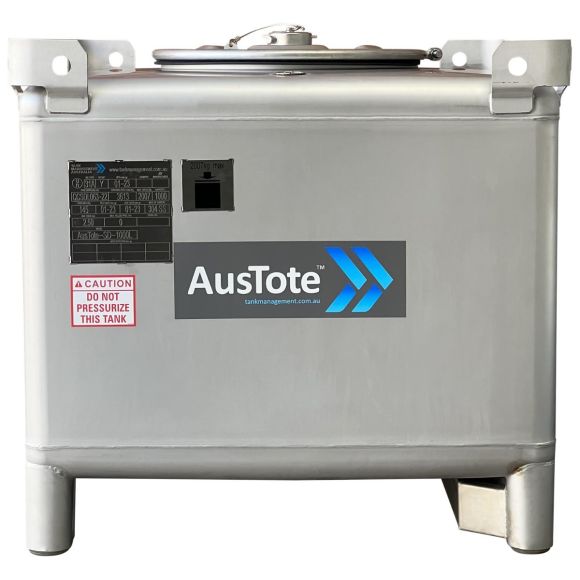
Plastic and Stainless Steel IBC Maintenance Tips
Intermediate Bulk Containers (IBCs) play a crucial role in industries ranging from agriculture and mining to chemical processing and food production. Designed for the efficient storage and transport of liquids and semi-solids, IBCs come primarily in two materials: plastic (typically HDPE) and stainless steel (often AISI 304). Each offers specific advantages depending on the application — from chemical resistance to structural durability.
Whether you’re using a plastic IBC for corrosive substances or a stainless steel IBC for high-purity or heavy-duty use, ongoing maintenance is essential. This guide provides practical, industry-relevant advice on maintaining your IBCs to ensure safety, regulatory compliance, and long-term performance.
Introduction to Plastic and Stainless Steel IBCs
IBCs are designed for bulk liquid storage and transport. The two most common types are plastic and stainless steel. A plastic IBC is typically used for applications where weight, affordability, and chemical compatibility are priorities. In contrast, a stainless steel IBC is ideal for harsh environments and materials requiring high cleanliness, such as food-grade or hazardous chemicals.
Both types come with a variety of IBC accessories that enhance handling, safety, and utility.
Importance of Regular IBC Maintenance
Regular IBC maintenance not only extends the lifespan of your containers but also reduces risks such as cross-contamination, leaks, or structural failure. Over time, repeated use can cause wear, especially on valves, seals, and inner linings. This is particularly important for businesses managing chemical storage containers, where strict industry compliance is required.
Cleaning Tips for Plastic IBCs
Cleaning your plastic IBCs effectively is critical to prevent residue build-up:
Rinse immediately after emptying to avoid chemical hardening or microbial growth.
Use industry-approved detergents or neutralising agents appropriate to the product previously stored.
Flush the outlet valve and allow adequate time for drying.
When managing large fleets, tools like jet washers or internal spray balls — often available as part of your IBC accessories — can significantly improve cleaning outcomes.
Cleaning Tips for Stainless Steel IBCs
Due to their durability, stainless steel IBCs require less frequent but more thorough cleaning:
Apply high-pressure water jets or steam for industrial applications.
Use a non-abrasive brush to preserve the internal finish.
Where appropriate, apply food-grade or chemical-grade sanitisers.
This process is especially critical for companies using food-grade IBCs, where hygiene must meet stringent regulatory standards.
Inspection Guidelines to Spot Wear and Damage
A scheduled IBC inspection helps identify small issues before they become safety hazards:
Examine external cages or frames for corrosion or structural weakening.
Look for stress marks, dents, or bulges in both plastic and stainless steel tanks.
Check valves, gaskets, and outlet threads for leakage or degradation.
Additionally, ensure your containers are stored on approved IBC bunds. Bunding is vital for spill containment, particularly in chemical handling environments.
Best Practices for IBC Storage and Handling
Proper storage and handling practices protect IBCs from premature wear:
Always store on level, load-bearing surfaces.
Avoid direct exposure to UV for plastic units.
Don’t stack IBCs beyond their rated capacity.
Use appropriate equipment during lifting and transport to avoid impact damage.
Employing quality IBC accessories, such as valve guards or dust caps, can further reduce wear during handling.
When to Repair or Replace Your IBC
Knowing when to opt for IBC tank repair versus full replacement can save time and money:
Repair when dealing with minor valve issues or surface scratches.
Replace if the tank has sustained structural damage, persistent leaks, or fails pressure testing.
For long-term storage or aggressive chemical use, investing in a robust stainless steel IBC may offer better lifecycle value.
Regular assessments ensure your containers remain compliant with industry and safety regulations.
Final Thoughts on Extending IBC Lifespan
From safe storage to routine cleaning, every aspect of IBC management plays a role in longevity and compliance. Whether you’re working with a plastic IBC or a stainless steel IBC, small practices like regular inspection, proper cleaning, and bunded storage make a big impact.
At Tank Management Australia, we provide comprehensive solutions to support your container lifecycle — including IBC bunds, tank repair services, and high-performance IBC accessories. No matter your industry, we’re here to help you protect your product, your people, and your bottom line.







 Previous article
Previous article